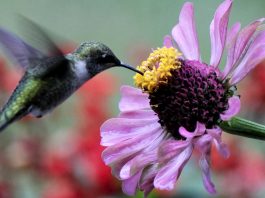A research team from Simon Fraser University has investigated the negative impacts of climate change on bees and their populations.
Rising temperatures negatively impact bee populations
Climate change has been a growing concern in the scientific community for decades; as the Earth’s temperature rises, as do various negative impacts on the planet. This study has revealed that temperature changes have negatively impacted most species of bee populations for the past 120 years. The research team noted that it is the temperature changes that have had the biggest negative impact compared to others, such as precipitation or floral resources.
“Bumble bees are important pollinators for wild plants and for the crops humans rely on for food. That is why we need to develop conservation strategies that account for the future impacts of climate change on bee populations,” explained Hanna Jackson, leader of the study and a Masters Student in the M’Gonigle Lab at Simon Fraser University.
This study was recently published in Biology Letters.
Study collaborators include the US-based Pollinator Partnership, the Xerces Society for Invertebrate Conservation, and the Department of Biological Sciences at the University of Southern California.
Analysing different bumblebee species
The research team examined an existing dataset containing records on 46 bumble bee species across north America between 1900 to 2020. In doing so, they were able to create two occupancy models – one that concentrated on time and another that focused on environmental factors. This meant that scientists could estimate the effects of climate and land-use variables on species’ occupancy, which is a measure of where species are discovered. It was revealed that a total of six bumble bee species decreased through time, 22 increased and the remaining 18 appeared to remain stable.
Additionally, the team observed that temperature and precipitation both increased, on average, between 1900 and 2020, which is during the post-industrial revolution period. Thus, the temperature changes predominantly had negative impacts on bumble bees. Thirty-seven of the 46 species demonstrated greater declines or less positive increases in occupancy under observed temperature changes when compared to if the temperature had remained constant.
Furthermore, scientists noted that nine of the bumble bee species exhibited declines that link to changing temperatures within their ranges. The team were not able to find patterns in the other factors that were studied, such as precipitation, and only one species declined based on floral resources.
In fact, both floral resources and precipitation had mixed results. Approximately half of the bumble bee species were adversely affected by changes in precipitation or floral resources, while the other half were positively impacted. Thus, researchers concluded that changing temperatures are a major environmental factor driving changes in bumble bee community composition.
“Because bumble bee species likely vary in their future responses to land-use and climate change, conservation action should prioritise individual species, taking into account their unique climate and habitat preferences,” concluded Jackson.





